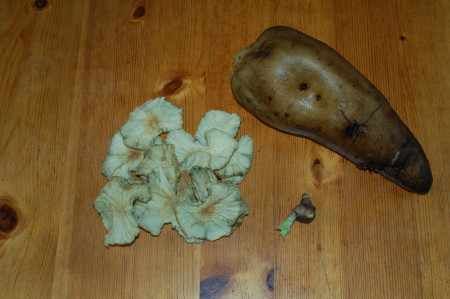If you want to learn more on the subject, an excellent video can be found here: Sweet Misery.
Stephen Fox recently sent me an email update as to where things currently stand in the battle to get it properly labelled as a carcinogen or banned in the US:
New Mexico Senate President sides with World’s Largest Neurotoxic Carcinogenic Artificial Sweetener Maker, Ajinomoto, to Kill Consumer Protection Request of FDA to Rescind Aspartame
It saddens me to inform your readers that Wednesday morning Senator Tim Jennings cast the vote that killed a vital consumer protection measure in Senate Rules Committee. That was Senate Memorial 9 of Gerald Ortiz y Pino which asked the FDA to take this carcinogenic and neurotoxic artificial sweetener off the market, since it is still found in 6000 products, from food to pharmaceuticals.
This chemical was patented by G.D. Searle, which back in 1966 was investigating peptic ulcer drugs; the story from Searle is that the chemist licked his finger, and discovered that it was 200 times as sweet as sugar, profit lights went off in the chandelier in the corporate board’s cerebelum, but the FDA turned them down for approval for 15 years because of concerns over the methyl ester in aspartame becoming methanol then formaldehyde, and causing harm to the consumer. Jennings mentioned in the committee that he had had problems with acid reflux and would vote against the Memorial which he did (as if it still had something to do with peptic ulcer drugs!); I wonder if that was apparently all he had read of the Memorial, the first sentence: but I pointed out as politely as I could muster, that it had been considered as a peptic ulcer drug 46 years ago, but that was kind of like talking with Rip Van Winkel after his 300 year nap.
[Try to picture a Roswell rancher, a little overweight, impeccably dressed, with a dry scratchy voice, kind of populist appeal, like a New Mexico version of Will Rogers, homespun, witty, with a long background in Senate Finance, given the position as Pro Tem after the last one died suddenly, then elected in a fierce struggle between progressive/liberals and Republicans/Conservative Democrats. (Guess who won?)]
With all due respect to the Senate Pro Tem, Jennings ought to have been somewhat alarmed when the word “carcinogen” comes up in any serious legislative context, having just lost his wife at the age of 53 to a long ordeal with cancer. If he were genuinely concerned for the health of New Mexicans rather than just capitulating to the phalanx of corporate lobbyists speaking against it, he would have helped to pass it.
This is truly New Mexico’s deep and avoidable loss, as California is moving forward with consideration of aspartame as a carcinogen under Proposition 65, which allows them to label it as “a chemical known by the state of California to cause cancer,” and to even sue the manufacturers and corporate users, like Coca Cola, Pepsi, and Wrigley’s Gum. The California Attorney General, Edmund Gerald Brown, Jr., is already doing this in suits against Whole Foods for knowingly including a different carcinogen (1-4-5 Dioxane) in their 365 lines of Organic Soaps and Body Products, and then basically concealing it. Mark my word, these suits will come for aspartame and they will resemble the Tobacco Suits of the 1990’s, which resulted in judgments of $235 Billion.
The legislators love to spend that money now, but back in the early 1990’s, as then-Attorney General now-U.S. Senator Tom Udall told me many years ago, the Legislature would not contribute 50 cents to help fund the lawsuits, because of corporate lobbyists opposing such allocations by the Legislature. Similarly, these legislators who would not ask the FDA to take it off the market, will want to spend the proceeds of the aspartame suits. Ludicrous!
The Ministry of Education in British Columbia Canada recently agreed to remove ALL artificial sweeteners from the elementary and middle schools, as a result of parents’ demands, in spite of Health Canada, the equivalent of our FDA, still parroting the corporate line that aspartame/methanol/formaldehyde/diketopiperazine was somehow acceptable,especially for diabetic children and overweight children.
This is the real world regarding aspartame. Tim Jennings’ vote was not part of the real world. He asked after voting “do not pass,” for more copies of the studies proving it causes cancer, and I should have said then (but didn’t out of deference to the committee) that “I have been bringing you those same studies since 2004, like the Ramazzini report, when I first talked with you, Senator, about the dangers of this artificial sweetener, and it looks like you never read them!” Three years ago, I brought Jennings (and most of the legislature) at my expense an outstanding DVD, SWEET MISERY, on Aspartame’s proven medical effects, but he must never have watched it. [You can see it now free, on-line, and I recommend it strongly. Just google SWEET MISERY].
Truly I always liked Tim Jennings until today’s performance in Senate Rules. There was a group of Senior Senators who guzzle the stuff still, even though one of them died, one resigned because of “old age,” (what could make you age faster than consuming formaldehyde?), and two got clobbered in the 2008 elections and they are I hope permanently gone (they was the worst obstructionists of them all). Senate Majority Leader Michael Sanchez is trying to quit, he says. The bottling companies bring dolly’s full of cases to the legislature in order to ingratiate the legislators and legitimize their products.
I really don’t know if Tim Jennings is among the diet soda guzzlers still. If he has quit, he did so out of concern for his own health. If he DIDN’T quit consuming aspartame, he certainly is in no real position to be deciding such things for the rest of the state, especially since it was only a Memorial REQUESTING the FDA to taken it off the market, and to vote from a position of such a total lack of accurate medical information is absolutely shocking to me.
The world’s largest Aspartame maker, Ajinomoto of Japan, hired slick and powerful lobbyists as well as the state’s largest lawfirm, the Rodey Firm; in 2005 and in 2006 knocked down and prevented both the Board of Pharmacy and the Environmental Improvement Board from considering getting rid of aspartame in medicines and food products, respectively, by threatening them with lawsuits.
Ajinomoto manipulated the Governor by hiring two of his good friends (one of these was Michael Stratton, who has subsequently been tied to the pay-for-play Federal Grand Jury investigation that unfortunately caused Richardson to choose to step down from being Obama’s first choice for Commerce Secretary—I still think he would have excelled at that job!) as lobbyists to influence him to renege on his prior strong support for the EIB hearings, and those EIB hearings, without the Governor’s support and the assurance from Patsy Madrid that they didn’t have to worry about such threats, crumbled.
Thus, now Ajinomoto has manipulated the Legislative Branch into obsequious acquiescence. Quite a score, eh? 3 out of 3! What’s next? Put a pro-aspartame lobbyist on the New Mexico Supreme Court? After all, another aspartame maker from back in the 80’s and 90’s, Monsanto, got their own former corporate lawyers appointed as Supreme Court Justice (Clarence Thomas) and as US Attorney General, John Ashcroft.
Fortunately, the Rules Committee Chair, Senator Linda Lopez, and Rules Member/Senate Public Affairs Chair, Dede Feldman, had the sense to vote for the Memorial. The three Republicans voted against it, I think, just because both Ortiz y Pino and I mentioned the unavoidable historic fact that Donald Rumsfeld forced the approval for aspartame in 1981, even thought the FDA had turned them down for the prior 15 years! Maybe Rules member Stuart Ingle gave them “marching orders” to vote against it; he is the Minority Leader in the Senate.
But you might say, “But wait! Rummy’s gone, out of the picture,” but those Republicans apparently see some residual partisan pride in drinking formaldehyde, and for you and your children to do so, and never question the miserable ethics of Rumsfeld for his role in that matter! He made $12-15 million on the deal, and what was good for his bank account must still be good for America!?
It is sickening when you really examine the corporate manipulation and control of government at all levels, especially in the regulatory branches. I am sad to conclude today that Tim Jennings is part of that mess, rather than part of the real solution. Roswell’s other Senator, Republican Rod Adair, always sided with activists on this issue, and even cosigned as cosponsor some earlier related measures introduced in 2006, truly “reaching across the aisle,” as they are so fond of saying.
This really is not what a Senate President Pro Tem should be doing, siding with every Tom, Dick, and Harry corporate lobbyist who comes along. He should be helping to educate the vast lot of New Mexicans who still naively believe the FDA is there to protect them.
If you drink Diet Sodas or chew sugarless gum or consume Equal, and if you come down with migraine headaches, epilepsy, brain tumors, blindness, or any of the other 92 symptoms recognized by the FDA as caused by aspartame, remember Tim Jennings’ vote today in Senate Rules to deny a request of the FDA to take this proven poison off the market.
In the USA, products like asbestos, Thalidomide, leaded gasoline, cigarettes with horrible additives, Vioxx, Celebrex…(the list goes on and on), stay on the market because of the efforts of corporate lobbyists and obstructionist corporate lawyers. The USA only responds when one of two things happens:
1. the bodies of victims pile up
2. the lawsuits from the dead bodies and their heirs pile up.
Otherwise, you will see legislatures and regulatory boards and Governors and lobbyists from Ajinomoto, Coca Cola, Pepsi Cola, Monsanto, Equal, etc., sweep the dead bodies and the maimed and the impaired youth under the rug, until there is so much death and suffering under the rug, some nation will simply throw out the rug, and the health of that nation’s citizens will be the better for it.
Could that Nation ever be the United States? Doubtful, but if enough people communicated to Obama, to HHS Secretary Sebelius and to the next, as yet unappointed FDA Commissioner and Surgeon General, it could very well be the USA that takes aspartame off the market first.
After all, California took a mighty step in that direction just last Friday, regarding aspartame and Proposition 65. It doesn’t take a rocket scientist to realize that there is here an equation at work:
Lung Cancer and Emphysema/Tobacco suits in the 1990’s= Neurodegenerative Illnesses/Aspartame suits in the 2010’s!
Respectfully,
Stephen Fox, Editor, New Mexico Sun News, Santa Fe, New Mexico



